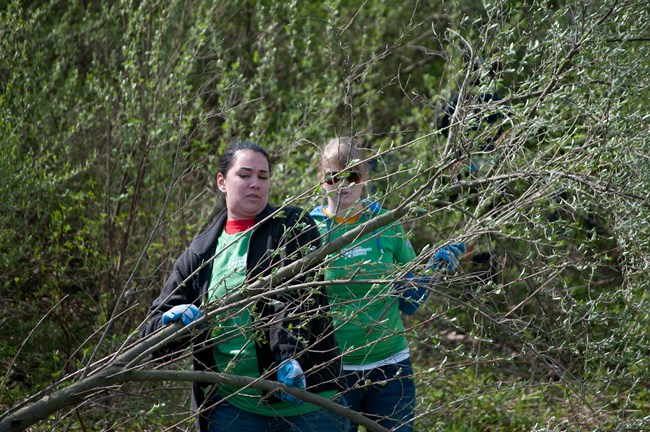
NPS / Tim Fenner Autumn Olive, Elaeagnus umbellataAutumn olive is a deciduous shrub that can grow up to 20 feet tall. It can tolerate drought and infertile soils, as its roots fix nitrogen. As a result, it invades grasslands, open fields, woodlands, and disturbed areas. IdentificationThe leaves are egg shaped and alternate with a silvery, granular sheen to the underside. Small, light yellow, aromatic flowers appear in June and July on plants three years or older. Small, reddish fruits ripen in August and September. OriginAutumn olive was introduced from eastern Asia. It has been planted for wildlife food and shelter as well as for windbreaks, forest restoration, and as ornamentals. How It SpreadsSeeds are widely distributed by birds, which eat the fruits. Each tree produces 2 to 8 pounds of seed per year and the number of seeds per pound ranges from 20,000 to 54,000. Control MethodsIndividual young plants can be pulled, making sure all roots are removed. From mid-April through October, cut larger plants at the main stem and paint the cut surface with a 10 to 20% solution glyphosate herbicide. |
Last updated: April 13, 2022
